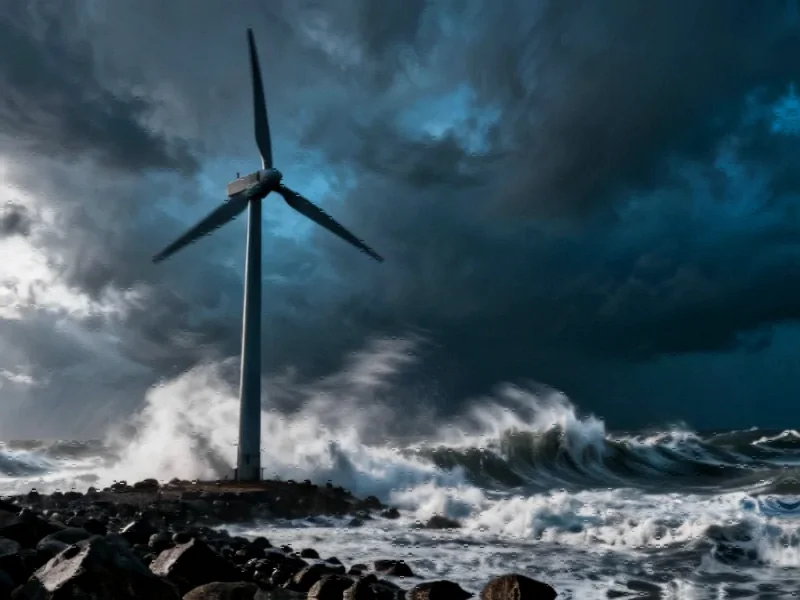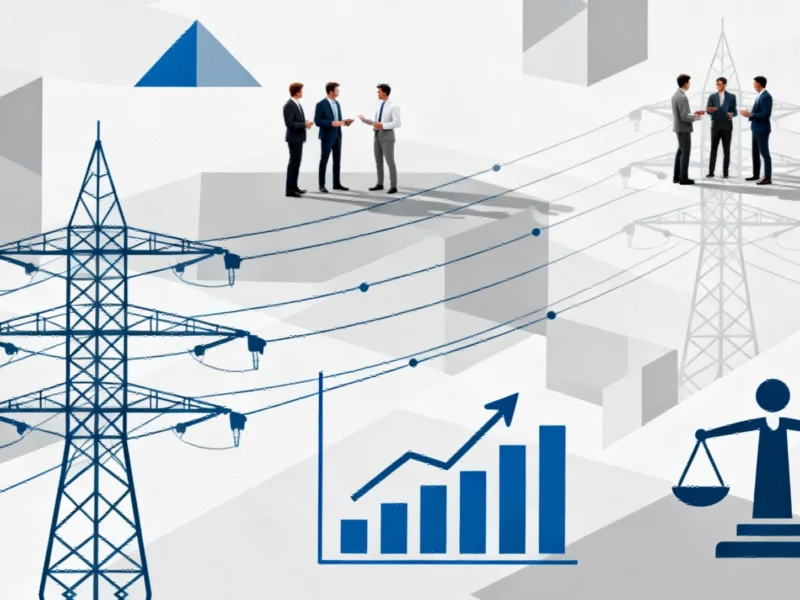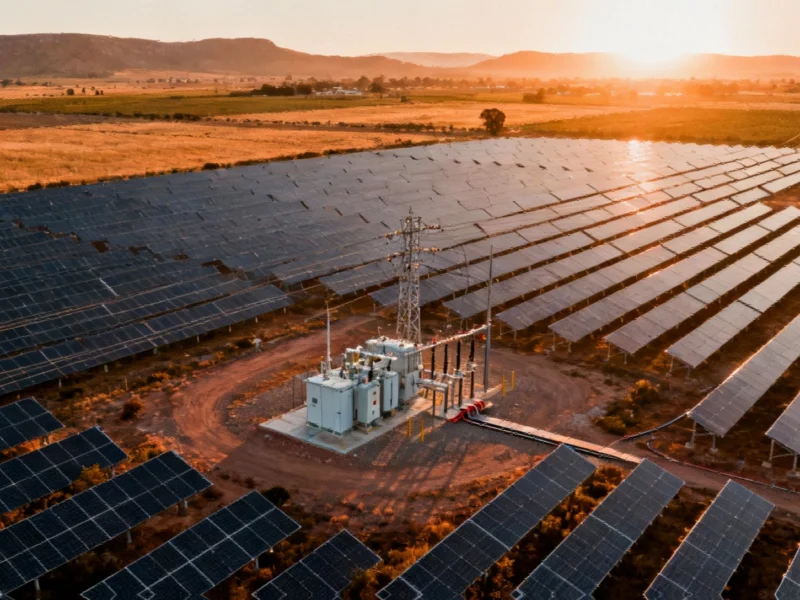The Unraveling of Offshore Wind’s Golden Era
Just two years ago, offshore wind appeared unstoppable. Energy giants were paying billions for development rights, governments were setting ambitious targets, and the technology seemed poised to lead the renewable energy transition. Today, that optimism has collided with harsh economic realities and shifting political winds, creating what industry leaders describe as a “perfect storm” threatening the sector’s growth trajectory.
The dramatic turnaround became undeniable this summer when Germany offered prime North Sea locations—boasting some of the world’s best wind speeds averaging over 9 meters per second—and received zero bids from developers. This stood in stark contrast to 2022, when BP and TotalEnergies committed €12.6 billion for similar opportunities. The industry’s rapid deceleration reflects broader economic headwinds and political shifts affecting renewable energy globally.
Economic Squeeze: Interest Rates and Supply Chain Woes
The offshore wind sector flourished during the rock-bottom interest rate environment of the 2010s and early 2020s, with installed capacity exploding from approximately 3GW in 2010 to 78.5GW by the end of 2023. However, the post-pandemic economic landscape has delivered a series of blows. Rising interest rates have dramatically increased financing costs, while supply chain constraints have pushed capital expenditure to €3 million per megawatt, up from €2.5 million just two years earlier.
“Offshore wind has been going through a challenging time,” acknowledged Sven Utermöhlen, head of offshore wind at RWE, which has frozen its US investment plans. “This has been predominately driven by rising costs, but also an overarching political climate where the fight against climate change and the drive for decarbonisation has somewhat slowed down.”
The financial strain has forced painful adjustments across the industry. Ørsted, the world’s largest offshore wind developer, is raising $9 billion from investors while cutting a quarter of its workforce. Other developers, including Corio Generation and BlueFloat Energy, have similarly downsized or exited markets entirely. According to Wood Mackenzie, 24.1GW of offshore wind capacity and offtake agreements have been cancelled since 2023—enough to power 24 million UK homes.
Political Headwinds: From Support to Skepticism
Political support, once a reliable foundation for offshore wind development, has become increasingly fragile. In the United States, former President Donald Trump has described wind as the “worst form” of energy, frozen seabed leasing, and personally intervened to halt specific projects like Ørsted’s Revolution Wind development. This political environment creates uncertainty that mirrors Beijing’s regulatory intervention in other technology sectors.
Britain, the world’s second-largest offshore wind market, faces its own political challenges. The government’s decision to raise maximum prices in upcoming contracts-for-difference (CfD) auctions has drawn criticism, with the insurgent Reform party threatening to “strike down” the contracts if they gain power. The situation demonstrates how quickly political consensus can unravel, affecting long-term energy planning.
Contract Innovations: Stabilizing a Volatile Market
In response to these challenges, governments and industry players are turning to innovative contractual arrangements to restore stability. Contracts-for-difference (CfDs), pioneered in the UK and now being adopted in Germany, Denmark, and Vietnam, guarantee developers a fixed electricity price while requiring them to pay back the difference if wholesale prices exceed that level.
“You’re really looking at the CFD as the option if you want to deliver renewables at the scale that the governments are still projecting,” said Søren Lassen, head of wind research at Wood Mackenzie. These mechanisms address what TGS 4C analysts identify as the “central sticking point”: how to distribute costs and risks between developers and taxpayers.
The industry is also watching related innovations in other sectors that might offer lessons for managing complex supply chains and technological challenges. As companies navigate these turbulent waters, they’re looking to adjacent industries for solutions that could improve efficiency and reduce costs.
The Global Picture: Asia’s Ascent and China’s Dominance
While Western markets struggle, Asia represents a growing bright spot for offshore wind. Vietnam is introducing CfD contracts to jumpstart its industry, while the Philippines and South Korea are accelerating their development plans. This Asian push, combined with some tempering of interest rates and production costs, has injected cautious optimism into the sector.
China’s dominance in both manufacturing and installation continues to reshape global dynamics. The country now accounts for roughly half of the world’s installed offshore wind capacity. However, trade tensions are mounting, with Europe investigating whether Chinese turbine manufacturers receive unfair subsidies and US Energy Secretary Chris Wright urging countries to reduce dependence on Chinese technology.
Leading turbine manufacturers like Siemens Gamesa and Vestas are investing in new capacity, but analysts warn of potential shortfalls unless Chinese manufacturers expand further into global markets. This technological competition reflects broader market trends affecting multiple industries as countries vie for leadership in clean energy technologies.
Path Forward: Sustainable Growth After the Shakeout
Despite the challenges, industry leaders maintain that offshore wind’s fundamental advantages remain intact. The technology can generate power during more hours than solar and can be located farther from population centers. RWE’s Utermöhlen argues that “the fundamentals are intact,” but the industry needs “to get to a sustainable growth path” where supply and demand are balanced.
The International Energy Agency, while downgrading its 2030 growth outlook from 212GW to 140GW, notes that even this reduced pace would more than double the installation rate of the previous five years. Industry advisers suggest the current shakeout may ultimately strengthen the sector by weeding out bad market mechanisms and undisciplined players.
“Bad auction designs are disappearing because there’s no optimism that would make people tolerate them,” observed Jérôme Guillet, director at advisory firm Snow. “People that actually want to do offshore wind will do offshore wind now and it makes sense in some countries with the new stabilised current project economics.”
As the industry navigates these complex industry developments, the coming years will test whether offshore wind can overcome its current challenges and fulfill its potential as a cornerstone of the global energy transition. The sector’s ability to adapt to new economic realities while maintaining political support will determine whether it emerges stronger from this period of consolidation.
Ben Backwell, CEO of the Global Wind Energy Council, strikes a cautiously optimistic note: “I am encouraged. We have got over a lot of the humps we were facing.” This sentiment echoes throughout an industry that recognizes the current difficulties but remains committed to harnessing the power of offshore winds to drive the clean energy transition forward.
This article aggregates information from publicly available sources. All trademarks and copyrights belong to their respective owners.
Note: Featured image is for illustrative purposes only and does not represent any specific product, service, or entity mentioned in this article.



